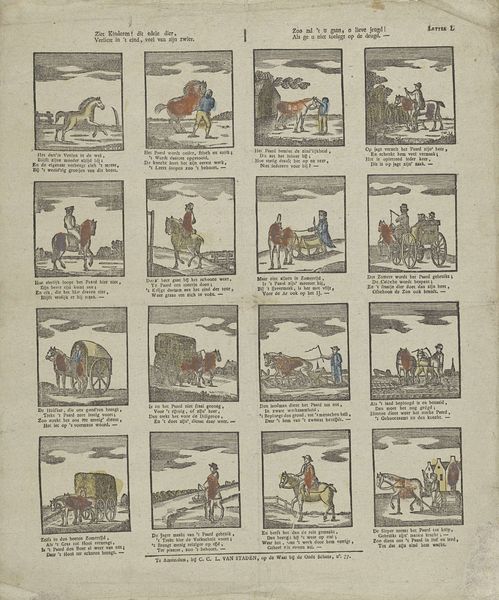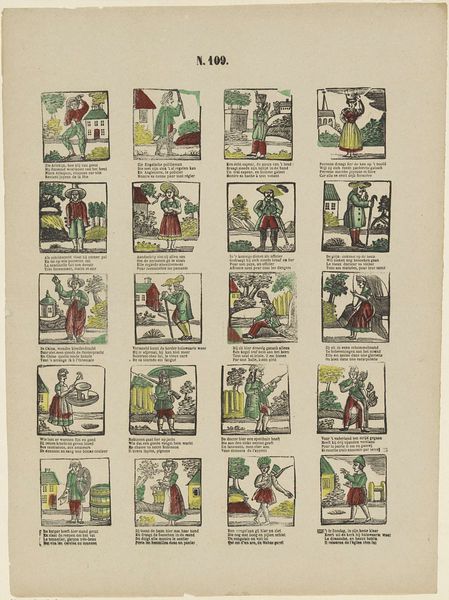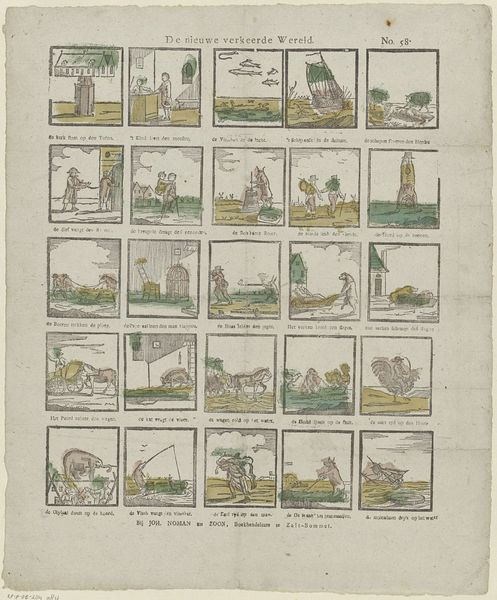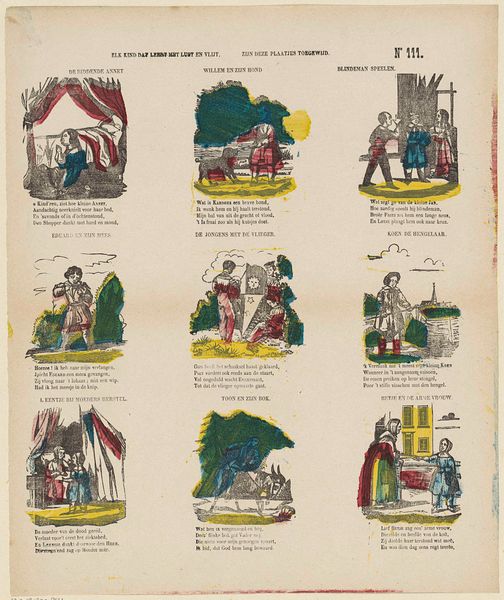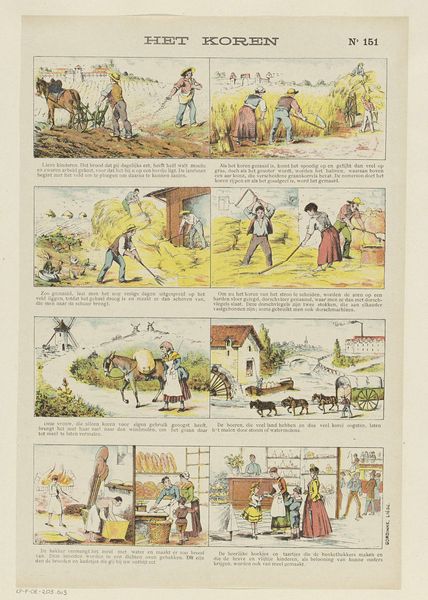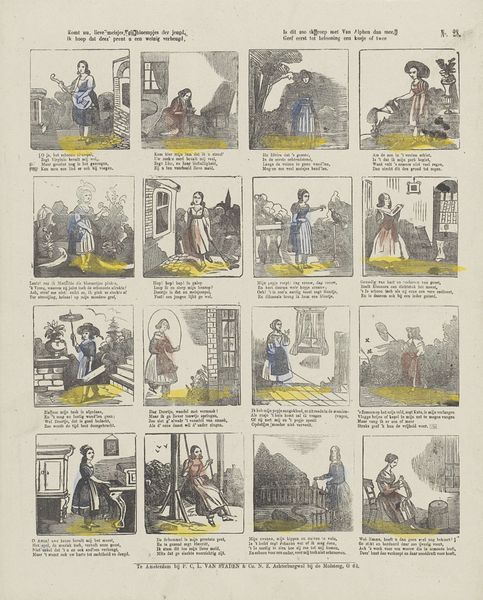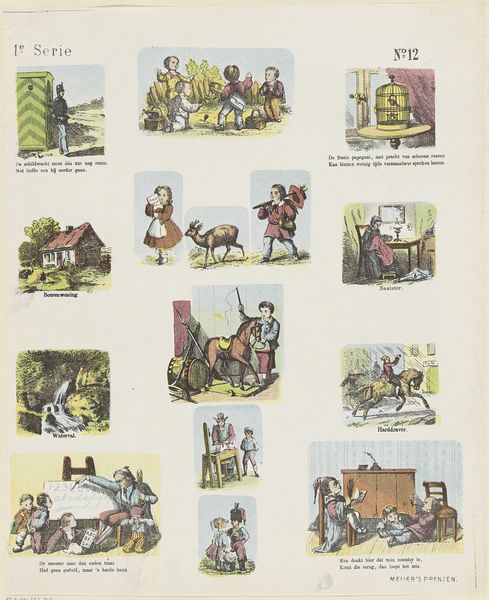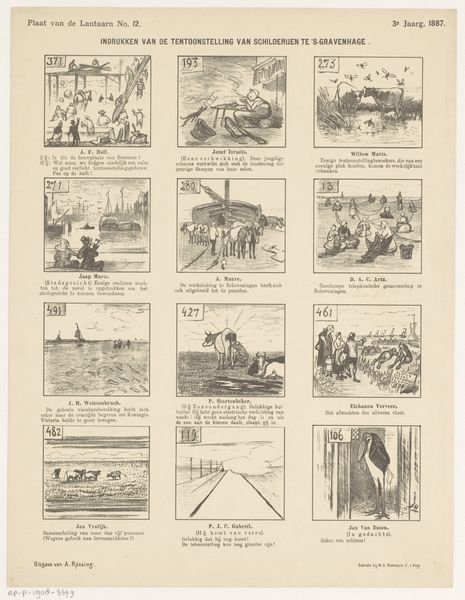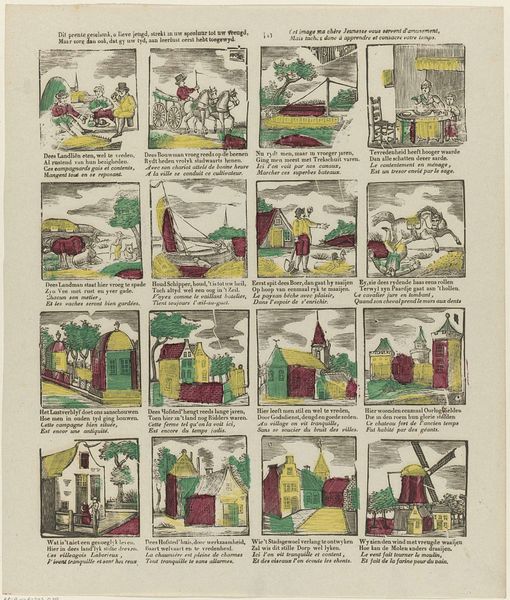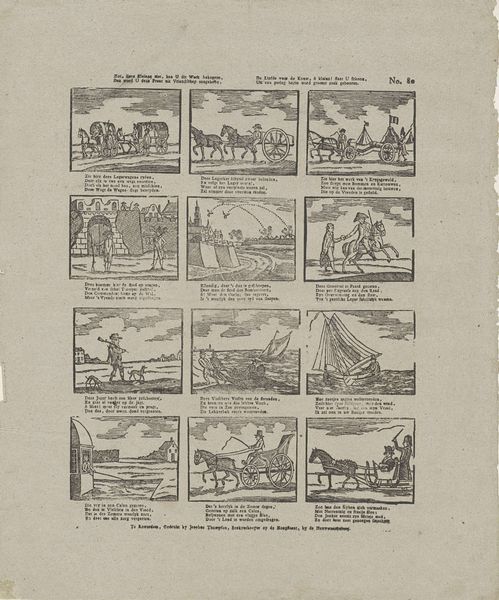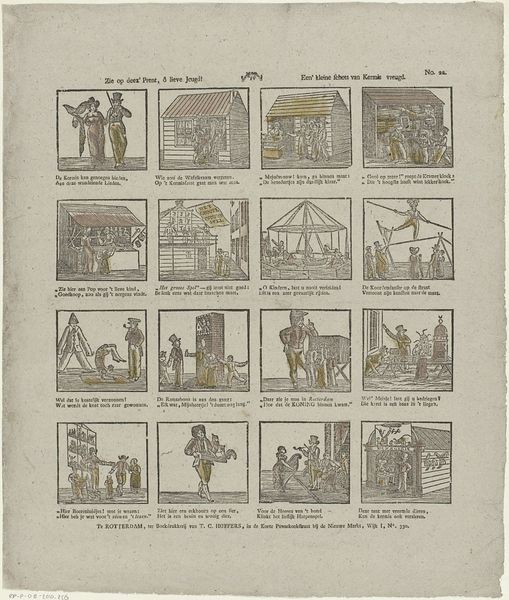
Dit prentgeschenk, o lieve jeugd! / Strekt in uw speeluur u tot vreugd. / Maar zorg dan ook, dat gij uw tijd, / Aan leerlust eerst heb toegewijd 1850 - 1870
0:00
0:00
#
comic strip sketch
#
narrative-art
# print
#
ukiyo-e
#
comic
#
genre-painting
#
cartoon carciture
Dimensions: height 400 mm, width 318 mm
Copyright: Rijks Museum: Open Domain
Curator: This print from between 1850 and 1870, by Willem Bal, is entitled "Dit prentgeschenk, o lieve jeugd! / Strekt in uw speeluur u tot vreugd. / Maar zorg dan ook, dat gij uw tijd, / Aan leerlust eerst heb toegewijd". It's housed at the Rijksmuseum. Editor: My first impression is how neatly this series of scenes is laid out—almost like a page of vintage clip art or an early comic strip, especially given the text accompanying each scene. There’s a didactic air to the imagery that resonates with a bygone era of children’s books. Curator: Absolutely. Its pedagogical purpose is embedded in its visual vocabulary, connecting recreation with education. This object signifies not just childhood amusements, but a conscious molding of young minds through visual and textual lessons. The rise of print media during this time helped solidify this use. Editor: Indeed. Notice the stark simplicity of the drawing, along with the colors. The rudimentary figures feel deeply connected to a printmaking process accessible for wider circulation and affordable consumption, signifying labor intended to create accessible cultural knowledge for children. What processes and materials would be involved to manufacture this? Curator: Given the period, it's most likely a form of lithography or early chromolithography, enabling color printing more easily. The multiple scenes suggest mass reproduction for widespread distribution within the Dutch-speaking communities. It hints towards educational reforms happening at the time where standardized resources played a role in nation-building. Editor: The architecture also informs the narrative - churches, mills, houses! All signifiers of local production, embedded traditions. The scenes depict societal landscapes of children growing in the mid 19th century that would be known by most people. There seems to be less separation from labour to leasure depicted here than exists now. Curator: Precisely. So beyond its formal aesthetic value, this artwork shows societal values imparted onto children through didactic imagery and reproducible printing techniques, suggesting cultural ideologies woven into playtime. Editor: I'm intrigued how techniques from so-called ‘low-brow’ sources - such as printing - were deployed here for an almost elevated social purpose; child education and moral growth. This raises many exciting discussions to come for further work on art as commodity. Curator: Likewise. Thinking about the original intended use of this piece versus how it has found institutional collection at the Rijksmuseum reveals the many interesting trajectories a print like this embodies through sociohistorical progression.
Comments
No comments
Be the first to comment and join the conversation on the ultimate creative platform.

